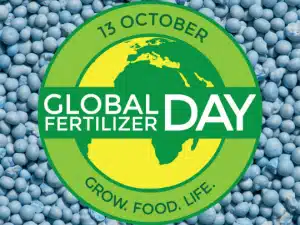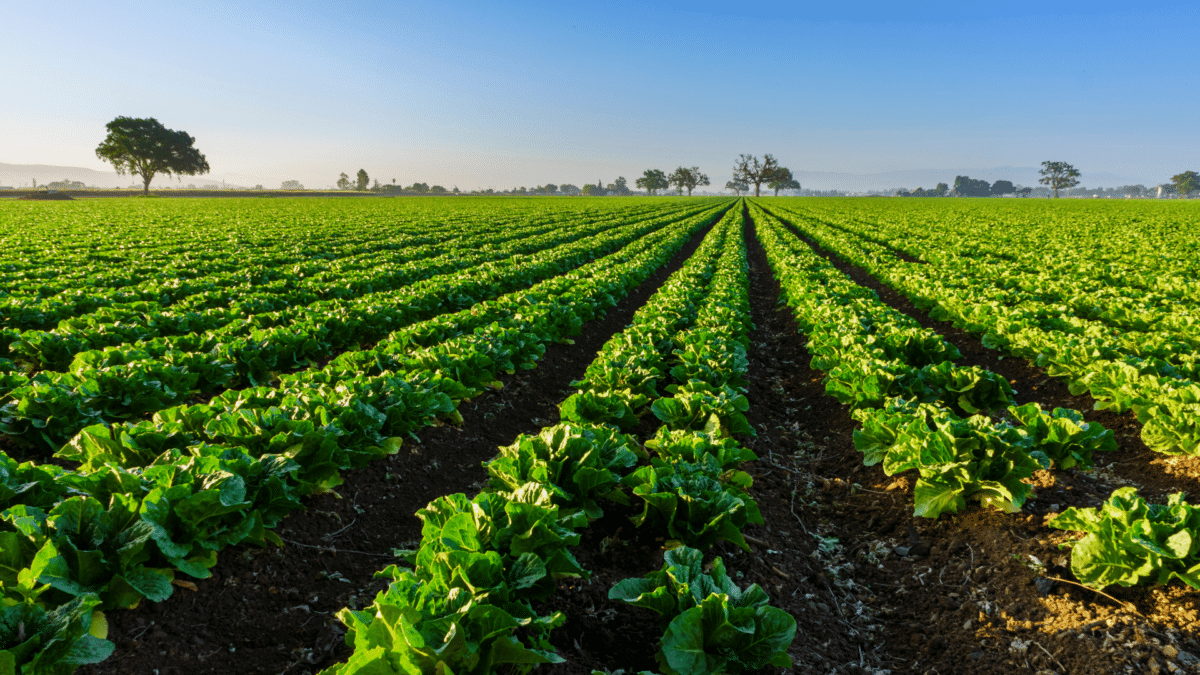Why can’t I access this file?
Possible reasons you cannot access this file:
- Your membership has expired.
- The file is restricted to certain users.
If you are seeing this message in error, please contact us.

On March 15, 2024, EPA released the draft risk evaluation under the Toxic Substances Control Act (TSCA) for formaldehyde for public comment and peer review. The EPA preliminarily determined that formaldehyde poses an unreasonable risk in 3 conditions of use (COU) related to fertilizer. TFI has developed a one-pager on formaldehyde. Please reach out to Reagan with any questions or to get involved in TFI’s response to this evaluation.

The FERT Foundation is home to 12 research projects that focus on fluid fertilizer and 4R optimization. Members had the opportunity to meet and learn about these projects during last week’s Fertilizer Research Forum. Each week we have been featuring a different researcher in this publication, and this week, we’d like you to meet 4R Researcher Patrick Brown.
Researcher: Dr. Patrick Brown is the Professor of Plant Nutrition at the University of California, Davis – USA. He received his B.Sc. in 1984 from Adelaide University, Australia and Ph.D. from Cornell University, USA in 1988. Dr. Brown has authored more than 250 scientific journal articles and numerous books and is among the highest cited experts in plant nutrition, biostimulants, boron, foliar fertilizers and horticulture. Dr. Brown is recognized globally as a leader in both basic and applied plant nutrition and has served as a member of numerous scientific and technical committees for governmental agencies including US-EPA, USDA, Californian Dept. Food and Ag and the International Standards Organization. Dr. Brown is a member of the IFA’s Science Panel for the Responsible Use of Fertilizers. Dr. Brown has received many awards national and international for excellence in research and extension.
Project Name: Optimizing Potassium Management in Almond
University: UC Davis
Years Funded: 2021-2023
4R Questions Addressed: Rate, Source, and Place
Dr. Brown’s fluid project is designed to:

The destruction of the Key Bridge in Baltimore should have a relatively limited impact on U.S. fertilizer trade. Over the last five years, on average, about 1% of all U.S. fertilizer imports have come in through the Port of Baltimore. In 2023, fertilizer imports into the Port of Baltimore were valued at nearly $75 million. Over 86% of those imports were nitrogenous fertilizers. Baltimore was the 7th most important port for imports of fertilizer from Russia in 2023, with imports of $33.5 million from that trade partner. Fertilizer exports from the Port of Baltimore are more limited, averaging about $7 million over the last five years. Less than 1% of U.S. fertilizer exports in 2023 left from Baltimore.

This week, TFI organized a strategy meeting involving state advocacy experts from Nutrien, Helena, Corteva, BIO, CropLife America, and Southern Crop Production Association. Together, they outlined essential steps to implement the plan for achieving state adoption of the biostimulant model state legislation. This initiative aims to establish a consistent definition and uniform label across all 50 states. The strategy will complement TFI’s ongoing efforts to educate and garner support from NASDA, state agribusiness associations and local farm bureaus. Please contact Ed Thomas with any questions.

A TFI member recently reached out with a question regarding truck drivers’ bill of lading paperwork when picking up loads at plants or terminals and whether a pdf on an app would suffice. Under Federal Motor Carrier Safety Administration revisions to the Code of Federal Regulations from a couple of years ago, drivers do not need to possess a paper copy. Read the final rule regarding electronic recordkeeping below. The real thing is just that you have to ensure the necessary record availability and record retention. Electronic means of doing so is sufficient. Just for your awareness when reviewing the document, not every reference to bill of lading highlighted because not all references were relevant. For more information contact Tom Lynch.

Possible reasons you cannot access this file:
If you are seeing this message in error, please contact us.

The United States Geological Survey’s (USGS) 2022 list of critical minerals, essential to the nation’s economic and national security, notably does not include phosphorus and potash, vital elements for agriculture and our food supply.
Efforts to include phosphorus and potash in the critical minerals list have gained momentum with legislation being introduced in both the U.S. House of Representatives and Senate. Supporters of the legislation make the compelling case that these minerals are essential for agriculture and, by extension, national security, and economic stability. The reevaluation of the critical status of these minerals is crucial, especially given the current challenges in the global fertilizer market.
The need for phosphate and potash to be included on the critical minerals list becomes evident when we consider that both are non-renewable resources and geographically limited. Being geographically limited means that the supply chains for phosphorus and potash are concentrated in a few countries, leading to potential geopolitical risks. For instance, most of the world’s phosphorus reserves are located in Morocco and Western Sahara, while Canada, Russia, and Belarus are major potash suppliers. This concentration raises concerns about U.S. national supply security, especially during times of political instability or trade disruptions. Recent global events have highlighted the vulnerability of fertilizer supply chains. Including phosphorus and potash in the critical minerals list would emphasize the need to develop more resilient supply chains and domestic sources, reducing import dependency and mitigating the impact of global shortages.
The U.S. has both phosphate and potash production, but expanding mines and opening new ones is a costly and time-consuming process measured in years and in the tens of millions of dollars for permitting alone. Being listed as critical minerals would not exclude these projects from environmental reviews, but would assign a single permitting agency to be responsible and streamline the process.
Adding phosphate and potash to the Critical Minerals list would be a significant step towards securing our own future and sending the clear message that safeguarding our nation’s food supply is not only an economic imperative, but a strategic priority that ensures our well-being.

On the 13th of October every year, the agricultural world comes together to celebrate one of the most revolutionary inventions: the harvesting of nitrogen from the air. This remarkable invention gave birth to modern-day fertilizers, and consequently, Global Fertilizer Day is commemorated to honor this milestone in agricultural innovation.
At the heart of this celebration lies the simple yet profound understanding of nitrogen’s role in plant growth. Nitrogen is an essential component of amino acids, proteins, and nucleic acids, foundational to all life forms. Although the Earth’s atmosphere is composed of about 78% nitrogen, plants cannot directly utilize this atmospheric nitrogen. Instead, they rely on nitrogen compounds present in the soil.
Historically, farmers depended on organic materials like manure, compost, or crop residues to replenish soil nitrogen. However, the growing human population necessitated a more reliable and voluminous nitrogen source. This need led to the invention of the Haber-Bosch process in the early 20th century, a method that captures nitrogen from the air and converts it into ammonia.
The advent of modern fertilizers changed the face of agriculture, dramatically increasing crop yields. With the world’s population expected to reach nearly 10 billion by 2050, ensuring food security becomes paramount. Here’s how fertilizers play an indispensable role:
Global Fertilizer Day isn’t just a celebration of an invention. It’s an acknowledgment of fertilizers’ central role in ensuring food security for billions worldwide. As we get ready to mark this day, let’s appreciate the immense contributions of the agricultural community and reaffirm our commitment to sustainable farming practices, ensuring a nourished and secure future for all.
For ways you can be involved in Global Fertilizer Day, click HERE.

Annually on October 13th, we observe Global Fertilizer Day, an occasion that underscores the monumental role of the fertilizer industry in modern agriculture. For many, fertilizers may merely appear as simple mixes of chemicals or organic compounds spread over fields. However, these humble blends are responsible for feeding billions worldwide.
Understanding the importance of Global Fertilizer Day means diving into its core objectives. Firstly, the day seeks to provide awareness and education. Like many specialized sectors, there’s a veil of uncertainty around the fertilizer industry for the average individual. This day offers an opportunity to demystify its significance, its production nuances, and its sustainable usage. Moreover, it’s a chance to address prevailing myths. The realm of modern science, including the domain of fertilizers, is riddled with misconceptions. Some view them as detrimental or believe they erode soil quality. We can debunk these myths with complex scientific data by spotlighting this topic.
But it’s not just about dispelling myths; Global Fertilizer Day is also a time for celebration, especially of the innovations sprouting within the sector. The fertilizer industry is continually evolving. Each year heralds the advent of newer, more efficient, and environmentally conscious fertilization methods, and this day provides the platform to bring these to the forefront.
At the heart of it all, fertilizers are indispensable for many reasons. With the UN estimating a global population surge to around 10 billion by 2050, the challenge to food security is evident. One answer is a significant increase in agricultural productivity, with fertilizers as the linchpin. Soil health is another aspect. As crops flourish and are subsequently harvested, they sap the soil of vital nutrients. Left to natural processes alone, these nutrients wouldn’t rejuvenate at the rate required for farming. Fertilizers ensure the Earth remains fertile and primed for planting.
Land availability presents another conundrum. The inexorable sprawl of urbanization is steadily eating into arable land. Fertilizers, with their capacity to boost yield per acre, ensure that produce levels don’t dwindle despite the shrinking agricultural land. Beyond just agriculture, the fertilizer industry is a formidable global economic force, generating myriad jobs across production, research, and application, and giving a robust impetus to the agricultural sector.
While we give thanks to the food at our dinner tables, it’s the fertilizers that tirelessly work in the backdrop, ensuring this abundance. As we commemorate Global Fertilizer Day, it’s time to bring these unsung heroes to the forefront, appreciating their indelible impact on our daily lives and their essential contributions to forging a green agricultural horizon.

The Advancing Cutting Edge (ACE) Agriculture Act (S.834) was introduced in the US Senate by Senators Michael Bennet (D-CO) and Roger Marshall (R-KS) on March 16, 2023. The legislation will establish a new program within the U.S. Department of Agriculture (USDA) called the ACE Agriculture Research and Extension Program, which would provide grants to universities, research institutions, and other organizations to conduct research and develop new technologies and practices in areas such as precision agriculture, plant and animal breeding, soil health, and water management.
The ACE Agriculture Act aims to promote innovation in American agriculture and help farmers and ranchers stay competitive in a rapidly changing global marketplace. By investing in research and development, the bill seeks to support adopting cutting-edge technologies and practices that can increase productivity, reduce costs, and improve sustainability in the agriculture sector, including research related to 4R Nutrient Stewardship.
The 4R Nutrient Stewardship, also known as the 4Rs, is an approach to fertilizer management that involves using the right source of fertilizer, at the right rate, at the right time, and in the right place. This approach aims to optimize nutrient use efficiency and minimize nutrient losses to the environment, promoting sustainable agricultural practices. Studies have shown that using the 4R method has proven benefits, including reducing nutrient losses and increasing yields.
The 4R Research Fund was established to develop sustainability indicators and environmental impact data for the implementation of 4R Nutrient Stewardship across North America. The fund offers essential resources to measure and document the economic, social, and environmental impacts of 4R Nutrient Stewardship.
4R Research encompasses a broad range of studies related to nutrient management, including research on fertilizer formulation and application, soil health, crop yields, and environmental impacts. The 4R Research website, https://www.4rresearch.org/us-funded-projects/, lists industry and government-funded research projects related to 4R Nutrient Stewardship, which can be a valuable resource for individuals interested in learning more about current research in this area.
The most important part of all research is finding ways it can be practically applied and publicly promoted. The 4R Advocates program is an initiative by The Fertilizer Institute (TFI) to recognize individuals and retailers who implement 4R Nutrient Stewardship concepts on their farms. Each year, some of the top 4R farmers and retailers in the U.S. are selected by TFI as annual 4R Advocates. These farms actively demonstrate the 4R Nutrient Stewardship concept, which is shown to maximize crop yields while minimizing nutrient loss to the environment and improving soil health.
The ACE Agriculture Act is related to 4R Research and 4R Nutrient Stewardship. It seeks to fund research on sustainable agricultural practices, including research related to 4R Nutrient Stewardship, to support the long-term sustainability and productivity of the U.S. agricultural sector. As part of its efforts to support sustainable agriculture, the ACE Agriculture Act includes funding for research on 4R Nutrient Stewardship practices, including plant and soil health, precision agriculture, and water management programs aimed at reducing the environmental impact of agriculture activities.
In addition to funding research, the ACE Agriculture Research and Extension Program would provide funding for extension services to help farmers and ranchers adopt new technologies and practices in their operations. This could include training and education on 4R Nutrient Stewardship practices, as well as other sustainable agriculture practices.
The ACE Agriculture Act and the 4R nutrient stewardship framework both aim to promote sustainable agriculture practices that can improve productivity, reduce costs, and improve environmental outcomes in the agriculture sector. The research funded by the ACE Agriculture Research and Extension Program could include studies on the 4R nutrient stewardship framework and its application in different agricultural systems. This could consist of adopting 4R practices by providing funding for research and development in areas such as precision agriculture, soil health, and water management. While the ACE Act will increase funding for new research and applied agricultural science, organizations like TFI are critical in sharing the importance and impact of these efforts with the public.